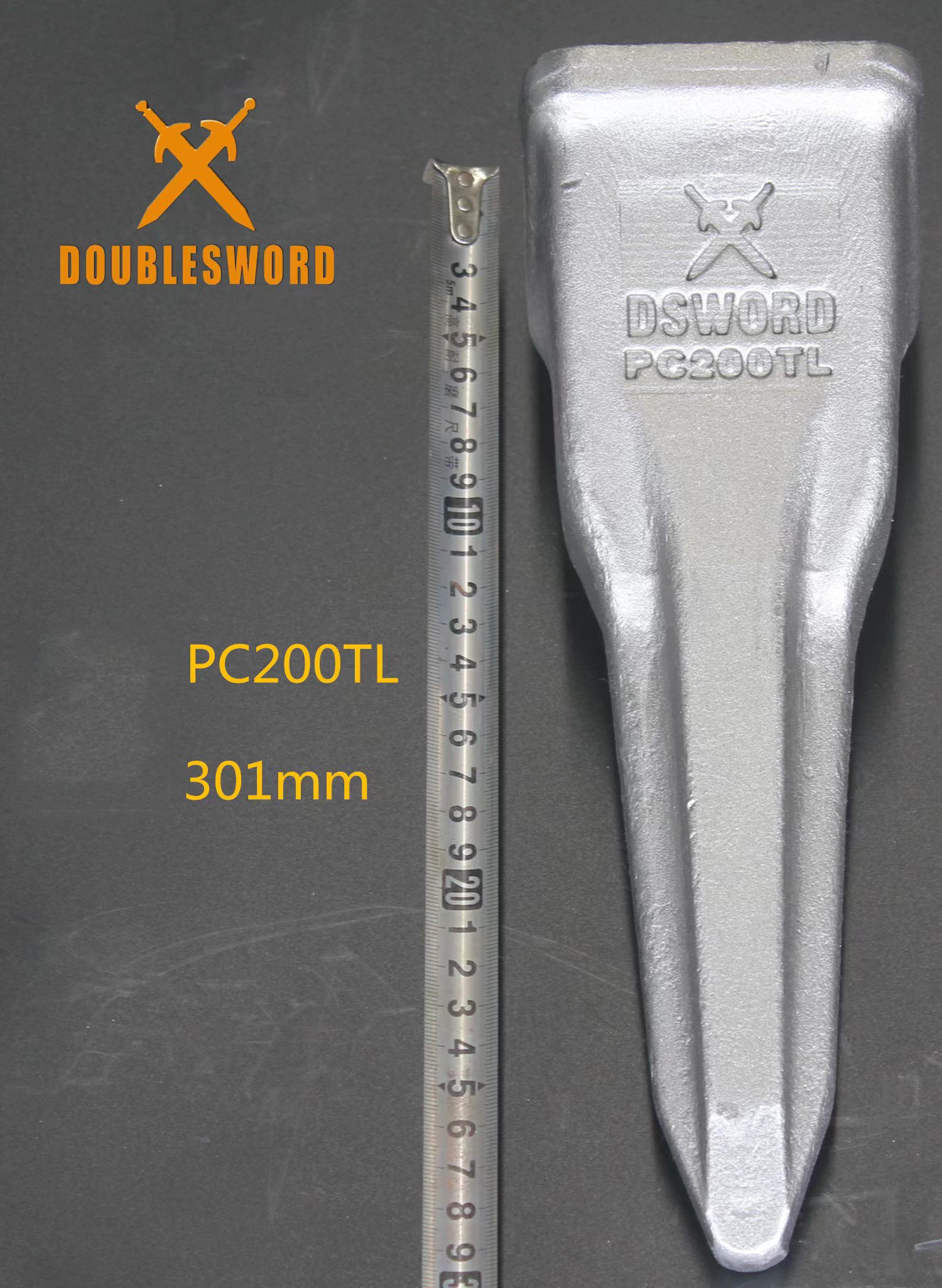Bucket tooth forging forming press (excavator bucket tooth forging equipment)Bucket Teeth wholesale price
Bucket tooth forging and casting process:
Forging: It is mainly formed by extrusion under high temperature. It can refine the grains in the parts, with dense interior and good performance. It will not cause environmental pollution.
Casting: Molten liquid metal fills the mold for cooling. Porosity is easy to occur in the middle of the workpiece. The production process will cause serious environmental pollution.
Forging bucket teeth use forging machinery to exert pressure on special metal blanks, extrude them at high temperatures, refine the crystal materials in forgings, and make them plastic deformation to obtain certain mechanical properties. After forging, the metal can improve its structure, which can ensure that forging bucket teeth have good mechanical properties, more wear resistance, and longer service life. The casting is to melt the metal at high temperature, add auxiliary materials, inject the mold, and obtain the casting after solidification. The casting produced by this process is easy to produce air holes and form sand holes, and its mechanical properties, wear resistance and service life are lower than those of forgings.Bucket Teeth wholesale price
Bucket teeth are generally divided into casting bucket teeth and forging bucket teeth according to their manufacturing methods. The performance of the two manufacturing methods are different. Generally speaking, forged bucket teeth are more wear-resistant, harder, and have a longer service life, which is twice that of cast bucket teeth, but the price is only 1.5 times. Bucket teeth are important parts of excavators and forklifts. Nowadays, forged bucket teeth are widely used. The forging bucket teeth are extruded by the forging hydraulic press (hot forging hydraulic press, hot die forging oil press) through the die.
Bucket tooth forging forming press (excavator bucket tooth forging equipment) adopts electro-hydraulic proportional control technology to realize digital control of pressure, speed and stroke, and can accurately control the forging size. It adopts a shoulder combined frame structure with relatively good overall stability. All oil cylinders are plunger cylinders, and the mobile workbench is stable in conversion, with a buffer device. The equipment is also suitable for cold and hot forging of metals, as well as the pressing process of plastic materials. It can complete free forging, die forging and other processes.
Hot forging process steps of excavator bucket teeth:
Step 1: The blanking process uses precision blanking, and the blanking tolerance of the blank length is ± 0.5mm.
Step 2: The heating process uses medium frequency induction heating at 1150 ℃ to heat the workpiece surface quickly and reduce the formation of oxide scale.
Step 3: In the upsetting process, remove the oxide skin around the blank upsetting, and at the same time remove the upper and lower oxide skin with air blowing, so as to improve the surface quality of the forgings and the service life of the dies, and ensure that the ratio of the blank length to the diameter is less than 2.5 during upsetting.
Step 4: In the closed compound extrusion process, the upper die moves with the sliding block of the bucket tooth forging forming press (excavator bucket tooth forging equipment) to compress the blank until all cavities are filled with metal. The bucket tooth blank is formed by the sliding compound extrusion of the upper die in the mold. The sliding block of the press returns, ejects the formed extrusion parts, and all extrusion processes are completed.Bucket Teeth wholesale price
Specific forging process of bucket teeth:
The round steel is heated to the temperature required for forging after blanking according to the size, and then it is horizontally placed in the pre forging cavity for forging and then turned 90 ° for forging again. The pre forging cavity is flat with one end thick and one end thin. The thin end of the pre forged blank is vertically placed downward in the final forging cavity. The wedge punch splits and extrudes the blank downward. After 4 to 5 times of forging, the blank is formed into a forging blank, Then, the forging blank is machined and heat treated. The blank is processed into a wedge shape similar to the bucket tooth shape by pre forging. Then, the groove at the bucket tooth root is formed by splitting and extruding the bucket tooth root with a wedge punch during final forging. The forming effect is good, the demoulding is easy, and the processing efficiency is high. Moreover, the mechanical performance of the bucket tooth is far superior to the products processed by casting. Through the optimization of the pre forging cavity and the final forging cavity, the machining allowance is small and the processing cost is low, Low energy consumption, no environmental pollution.
Post time: Nov-28-2022








